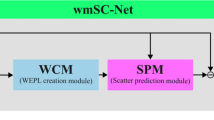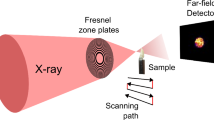Abstract
In-vivo dosimetry, in which small detector elements are attached to a patient’s body, is an important technique for directly evaluating radiation treatment doses. The glass rod dosimeter (GRD) possesses several advantages over alternatives, which makes it one of the most useful detectors for in-vivo dosimetry. However, because the GRD initialization process requires a prolonged exposure at very high temperatures, as well as subsequent gradual quenching, each measurement takes approximately a day to complete. Therefore, we investigated the reliability of a GRD used repeatedly without initialization processes to improve efficiency. Ten doses of 0.5 Gy were delivered and read using three GRD elements. Then, the same procedure was performed for doses of 1.0 Gy. A readout error of less than 2% was maintained for up to three irradiation doses. However, the fluctuations in the readout data increased significantly as the number of irradiation doses increased. In addition, we discovered that the combined uncertainty of the readouts was influenced more heavily by the cumulative amount of irradiation than it was by the number of doses. Our results should provide guidance for accurate and efficient GRD use.
Similar content being viewed by others
Change history
12 November 2019
The affiliation of Yongkan Ki should be corrected as follow:
References
J. Izewska, P. Andreo, S. Vatnitsky and K. R. Shortt, Radiother. Oncol. 69, 91 (2003).
J. Izewska and P. Andreo, Radiother. Oncol. 54, 65 (2000).
I. H. Ferreira, A. Dutreix, A. Bridier, J. Chavaudra and H. Svensson, Radiother. Oncol. 55, 273 (2000).
B. Mijnheer, S. Beddar, J. Izewska and C. Reft, Med. Phys. 40, 070903 (2013).
M. Ranogajec-Komor, Ž. Knežević, S. Miljanić and B. Vekić, Radiat. Meas. 43, 392 (2008).
H. Mizuno, T. Kanai, Y. Kusano, S. Ko, M. Ono, A. Fukumura, K. Abe, K. Nishizawa, M. Shimbo, S. Sakata, S. Ishikura and H. Ikeda, Radiother. Oncol. 86, 258 (2008).
J. E. Rah, S. Kim, K. H. Cheong, J. W. Lee, J. B. Chung, D. O. Shin and T. S. Suh, Appl. Radiat. Isot. 67, 324 (2009).
J. H. Lee, M. S. Lin, S. M. Hsu, I. J. Chen, W. L. Chen and C. F. Wang, Radiat. Meas. 44, 86 (2009).
J. E. Rah, U. J. Hwang, H. Jeong, S. Y. Lee, D. H. Lee, D. H. Shin, M. Yoon, S. B. Lee, R. Lee and S. Y. Park, Radiat. Meas. 46, 40 (2011).
Author information
Authors and Affiliations
Corresponding author
Rights and permissions
About this article
Cite this article
Jeon, H., Nam, J., Lee, J. et al. Experimental Study of In-vivo Dosimetry Using Glass Rod Dosimeters to Minimize the Initialization. J. Korean Phys. Soc. 72, 628–632 (2018). https://doi.org/10.3938/jkps.72.628
Received:
Accepted:
Published:
Issue Date:
DOI: https://doi.org/10.3938/jkps.72.628




